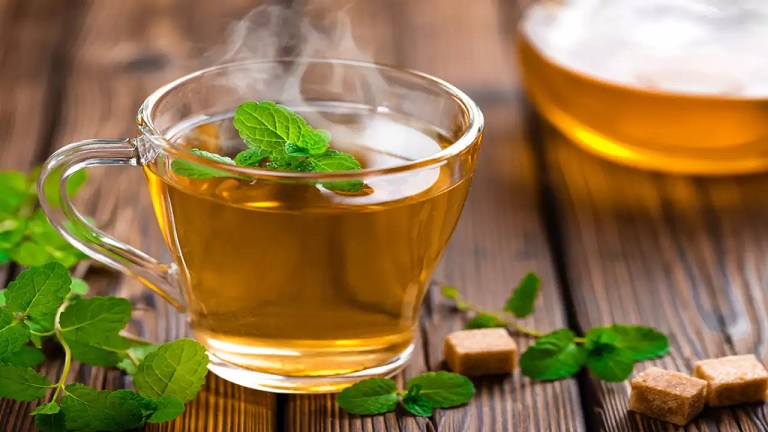Green tea, a globally cherished beverage, has earned its place as a staple for health-conscious individuals. Revered for its antioxidants and numerous health benefits, green tea has become more than just a drink—it’s a lifestyle choice. In this article, we delve deep into green tea’s origins, its health benefits, preparation methods, and much more.
Table of Contents
The Origins of Green Tea
A Historical Journey
Green tea originated in China over 4,000 years ago, where it was initially used as a medicinal drink. It later spread to Japan, becoming an integral part of Japanese tea ceremonies. Today, green tea is cultivated in numerous countries, including India, Sri Lanka, and Vietnam, but China and Japan remain the most renowned producers.
Cultivation and Varieties
Green tea is made from the leaves of Camellia sinensis. The difference between green tea and other types, such as black or oolong tea, lies in its processing. Green tea leaves are minimally oxidized, preserving their natural green color and potent compounds.
Health Benefits of Green Tea
1. Rich in Antioxidants
Green tea is loaded with polyphenols, particularly catechins like epigallocatechin gallate (EGCG). These antioxidants combat free radicals in the body, reducing oxidative stress and the risk of chronic diseases.
2. Supports Heart Health
Regular consumption of green tea has been linked to improved cardiovascular health. It helps reduce LDL cholesterol levels, regulate blood pressure, and improve blood vessel function, reducing the risk of heart disease.
3. Aids in Weight Management
Green tea is a popular choice for those seeking to shed a few pounds. It boosts metabolism and enhances fat oxidation, making it an effective addition to weight management routines.
4. Enhances Brain Function
Green tea contains caffeine, though in moderate amounts compared to coffee. Combined with the amino acid L-theanine, it improves focus, alertness, and cognitive function without causing jitteriness.
5. Promotes Skin Health
Thanks to its anti-inflammatory and antioxidant properties, green tea can improve skin health. It helps reduce acne, protect against UV damage, and delay the signs of aging.
6. Reduces Stress and Anxiety
The L-theanine in green tea is known for its calming effects. It helps reduce stress, promote relaxation, and improve mood, making green tea an excellent choice for unwinding.
How to Prepare the Perfect Cup of Green Tea
1. Choose the Right Tea
Select high-quality green tea from a reputable brand. Loose-leaf tea often provides a richer flavor than tea bags.
2. Water Temperature Matters
Avoid using boiling water, as it can scorch the delicate leaves and result in a bitter taste. Instead, use water heated to around 160–180°F (70–80°C).
3. Steeping Time
Steep your green tea for 2–3 minutes. Over-steeping can lead to a bitter flavor, while under-steeping may not fully extract the flavors and benefits.
4. Add a Twist
Enhance your green tea with natural additives like honey, lemon, or mint for a flavorful and healthful twist.
Types of Green Tea
1. Sencha
The most commonly consumed green tea in Japan, sencha has a fresh, grassy flavor and is rich in antioxidants.
2. Matcha
Matcha is a powdered green tea made from finely ground tea leaves. It’s known for its vibrant green color, intense flavor, and higher antioxidant content.
3. Gunpowder Green Tea
Named for its pellet-like appearance, gunpowder green tea has a slightly smoky flavor and is popular in North Africa.
4. Longjing (Dragon Well)
A famous Chinese green tea, Longjing is prized for its smooth, nutty taste and flat, sword-shaped leaves.
Green Tea for Beauty and Wellness
1. Green Tea Face Masks
Green tea is a popular ingredient in skincare products due to its antioxidant and anti-inflammatory properties. DIY face masks using green tea can rejuvenate and brighten your skin.
2. Detox and Cleansing
Green tea is often used in detox diets due to its ability to flush out toxins and promote overall well-being.
3. Hair Care Benefits
Rinsing hair with green tea can reduce dandruff, stimulate hair growth, and add shine to your locks.
Green Tea in Modern Cuisine
1. Green Tea Lattes
A creamy blend of matcha powder, milk, and sweetener, green tea lattes have gained immense popularity.
2. Desserts
Green tea has made its way into the world of desserts, featuring in ice creams, cakes, and cookies, adding a unique flavor and healthful touch.
3. Smoothies
Add a teaspoon of matcha or steeped green tea to your morning smoothie for an energizing and nutritious start to the day.
Tips for Choosing the Best Green Tea
1. Check the Source
Opt for green tea sourced from regions known for their high-quality tea production, such as Japan or China.
2. Look for Freshness
Fresh green tea has a vibrant green color and a pleasant aroma. Avoid tea that looks dull or smells stale.
3. Go Organic
Organic green tea is free from pesticides and harmful chemicals, ensuring a pure and safe cup of tea.
Side Effects and Precautions
While green tea is generally safe, excessive consumption may lead to side effects due to its caffeine content. These include:
- Insomnia: Drinking green tea late in the evening may disrupt your sleep.
- Stomach Upset: Consuming green tea on an empty stomach can sometimes cause nausea or acidity.
- Iron Absorption: Green tea may interfere with iron absorption, so it’s best consumed between meals.
Conclusion
Green tea is more than just a beverage; it’s a holistic health enhancer. Whether you’re sipping it for its rich antioxidants, including it in your beauty regimen, or savoring it in culinary creations, green tea offers a plethora of benefits. Incorporate this ancient elixir into your daily routine to experience its remarkable effects on your mind, body, and soul.
So, brew yourself a warm cup of green tea and take a step toward a healthier, more rejuvenated you!


